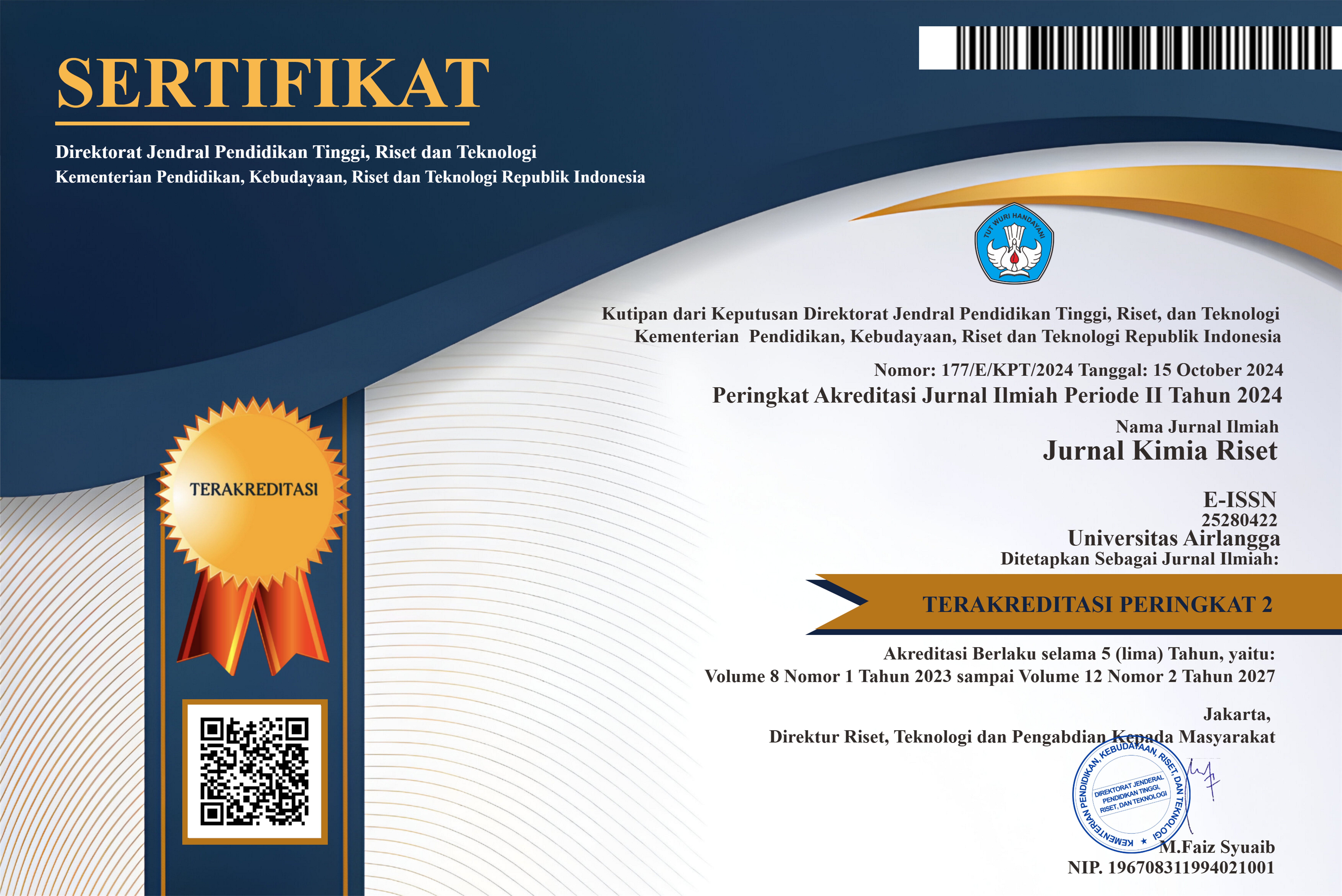A Novel Cerrena caperata Fungal Membrane: Antibacterial Effect of Deacetylation and Fatty Acid Coating
Downloads
Biofouling commonly occurred due to the accumulation of bacteria that blocked membrane pores, especially in fungal-derived membrane technology. Surface modification of Cerrena caperata fungal membrane was carried out in this study to enhance its antibacterial activity, which can be expected to prevent biofouling on the membrane surface. This modification is crucial to ensure the ability of the membrane to inhibit or kill pathogenic bacteria during water purification, ultimately producing safer water in the future. The membrane was synthesized from C. caperata mycelium cultured in potato dextrose broth for 4 weeks. Two modification treatments were applied: 1) deacetylation with 50% NaOH and 2) coating the membrane surface with 1% stearic acid. Both unmodified and modified membranes were characterized using Fourier Transform Infrared Spectroscopy. Antibacterial activity was tested against Escherichia coli, Bacillus cereus, and Staphylococcus aureus. The results showed that the most effective treatment for improving the antibacterial activity of membranes was deacetylation with 50% NaOH for 90 min, it might be caused the structure transformation of chitin to chitosan which have ability for antimicrobial efficacy. This research is expected to highlight the potential of fungi as a natural and sustainable raw material in the production of filtration membranes that are not only effective in water purification but also safer for both the environment and human health.
biofouling, Cerrena caperata, fungal-derived membrane
Copyright (c) 2025 Jurnal Kimia Riset

This work is licensed under a Creative Commons Attribution-NonCommercial-ShareAlike 4.0 International License.
COPYRIGHT NOTICE
1. By submitting the article to Jurnal Kimia Riset (JKR), the author has agreed to transfer some of the copyrights to the publisher of the research chemistry journal, Universitas Airlangga, indicated in the Copyright Transfer Agreement.
2. Authors still retain significant rights to use and share their own published articles for non-commercial purposes subject to Creative Commons Attribution-NonComercial 4.0 International License
3. All publications (printed/electronic) are open access for educational purposes, research, library, and other non-commercial purposes. Besides the purposes mentioned above, the editorial board is not responsible for copyright violations.















